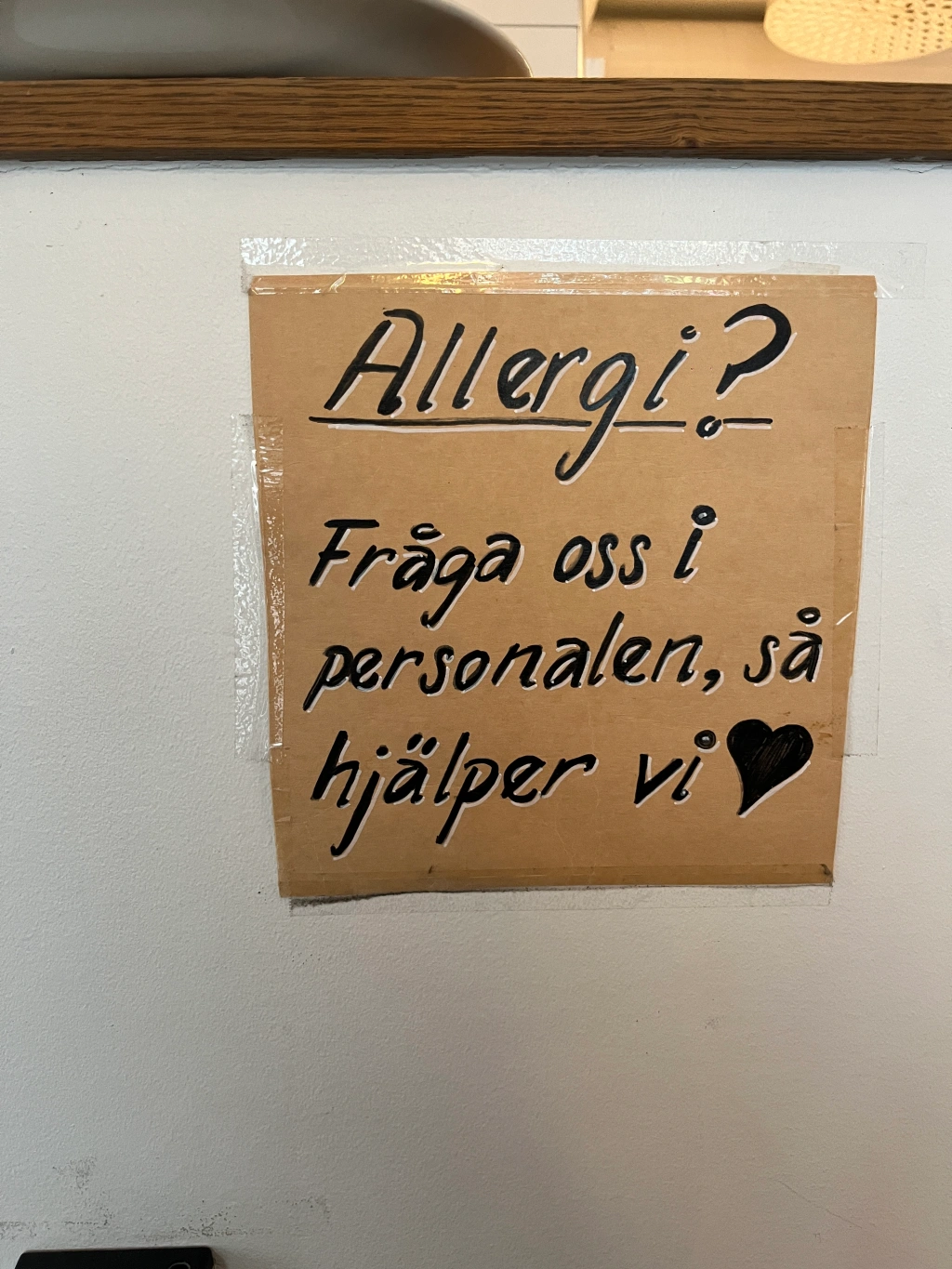Throughout my time studying abroad, I’ve had the wonderful opportunity to spend time in five countries, each with their own unique culinary experience. While I’ve learned to manage my allergy at DIS, where I have access to a kitchen and grocery stores, traveling doesn’t always allow for the same conveniences.
Here’s an overview of every country I ate in and how they accommodated my needs.
Denmark

Of course I have to begin with the country where I’ve spent the most time– Denmark! My experience here looks slightly different, as I mainly cook for myself and have become familiar with the language, which helps me navigate the country on a regular basis.
Though I haven’t eaten out in restaurants too much, both my allergy and wallet urging me to cook, I’ve been pleased to find that Danish servers have, for the most part, both acknowledged and accounted for my allergy. Most of them have also spoken English, allowing me to communicate in my native tongue, unrestricted in my explanation of severity.
Though I still feel a sense of “not quit getting it” that I have in every country outside of the United States, Denmark has placed towards the top of my list for ease of accommodation.
Germany

City: Hamburg
When my Short Study Tour led my class to Hamburg, I wasn’t sure what to expect in terms of the food. Just over the border, would it really be all that different from Denmark?
Though my needs were all eventually accommodated, I could definitely tell a difference in service between the two countries. Far fewer people spoke English, which made it more difficult to communicate. I resorted to Google Translate, which helped, but even still I noticed the start of a pattern which would continue in my travels to other places– oftentimes servers didn’t really distinguish between food needs.
Once or twice, I was given the gluten free or vegan options (which sometimes contained nuts!) and I had to use my better judgement to double check before eating and get the food swapped for the meal actually intended for me.
Though everything turned out okay, and I made it through the trip with no exposures, it was only because of the efforts I put in myself, which was disappointing but not unfamiliar.
Sweden

City: Malmö
Sweden was the first country I traveled to outside of DIS programming. This meant that I was without the help of pre-set menus and allergy notices, and had to manage eating out on my own.
Despite the challenge, I actually found Sweden one of the easiest countries to navigate. I did have to use translate more than in Denmark, but I found that servers were all responsive once they understood, and were willing to verbally reassure my safety.
I even noticed an allergy sign in a cafe, which was a nice acknowledge of my experience.
Scotland

Cities: St. Andrews, Edinburgh, Glasgow
Like Sweden, Scotland was a trip I planned on my own to visit a friend. Though we intended to be out most of the time, I knew I could always use her kitchen if worst came to worst.
After a few months abroad, I was excited by the prospect of going to an English-speaking country. This tease of familiarity crumbled as I came to realize that sometimes the distinct accent of those with whom I share half of my ancestry can be harder to pick up on to an American ear than a foreign language.
Despite the surprise in communication, I got around Scottish restaurants pretty easily. They seemed to understand my allergy and probably had service most similar to the US out of the countries I visited.
Poland

City: Warsaw, Krakow
My Long Study Tour took me to Poland, with my travels mainly in the country’s two largest cities. Had it not been a DIS programmed trip, this probably would have been the hardest country to navigate.
The trip started with ridicule from a server for asking if there were nuts on a margherita pizza (a valid question if you think about pesto– not that I should need an explanation when it’s my safety on the line). Fortunately, this didn’t set the tone for the rest of the trip and everyone else attempted to be helpful. There was definitely still confusion, even when I used Translate, and at times I wasn’t sure if they knew what I meant by saying I had an allergy. I also noticed the same pattern from Germany– mixing up food restrictions, though at least here it took less time for them to correct the mix up.
On one night, we did go to a Michelin Star restaurant that was the best about allergies I’ve experienced in Europe. They gave me modified or alternate meals when necessary and made sure they knew everyone’s restrictions up front. I was even able to eat the dessert, which is not something I usually can do in restaurants, even in the US.
Throughout my travels, I’ve learned the importance of patience, preparation, and self-advocacy. In my perspective, Europe doesn’t seem to understand food allergies in the same way as they do in the US. Not to say that ridicule and mishandling of allergies doesn’t happen in the states (it definitely does!), but the culture around it feels different.
This isn’t to discourage anyone from traveling, but rather to be aware and cognizant of where you may need to step up for your own safety. If anything, this experience has made me more reassured in my ability to take care of myself, even when it seems like everything is working against me.
Not only that, but it makes me eternally grateful to the communities I have back home that make having an allergy not feel like a burden. It may take extra time, caution, and resilience, but it’s the only thing I’ve ever known and I’m appreciative of having the opportunity to travel and reflect on my experiences.







Leave a comment